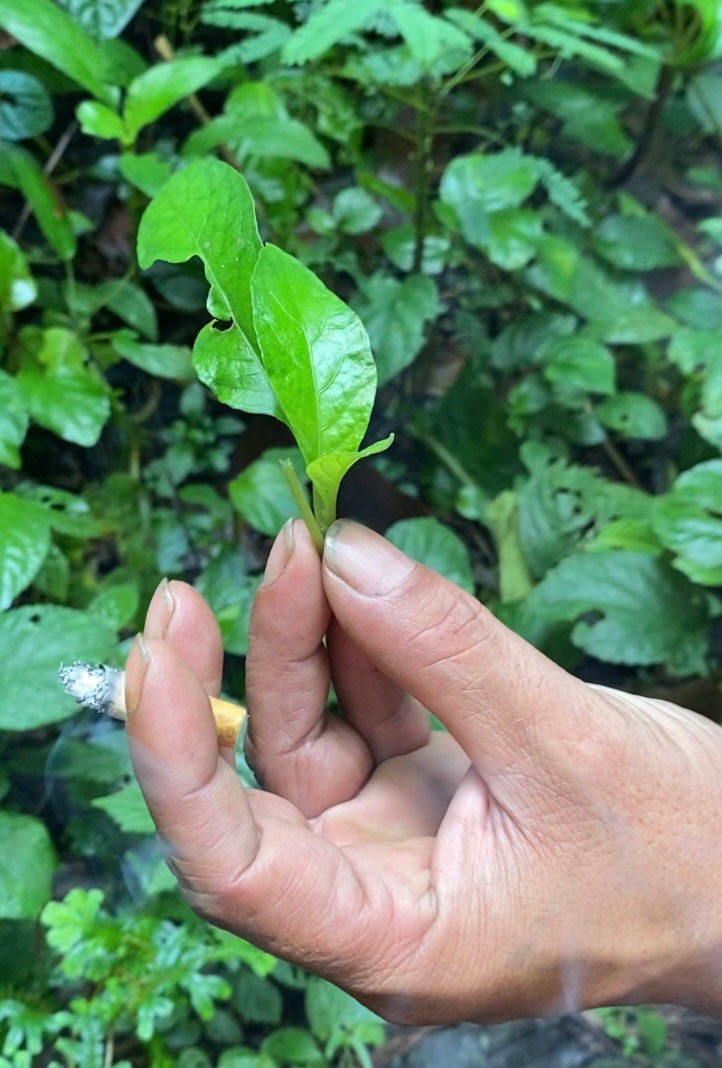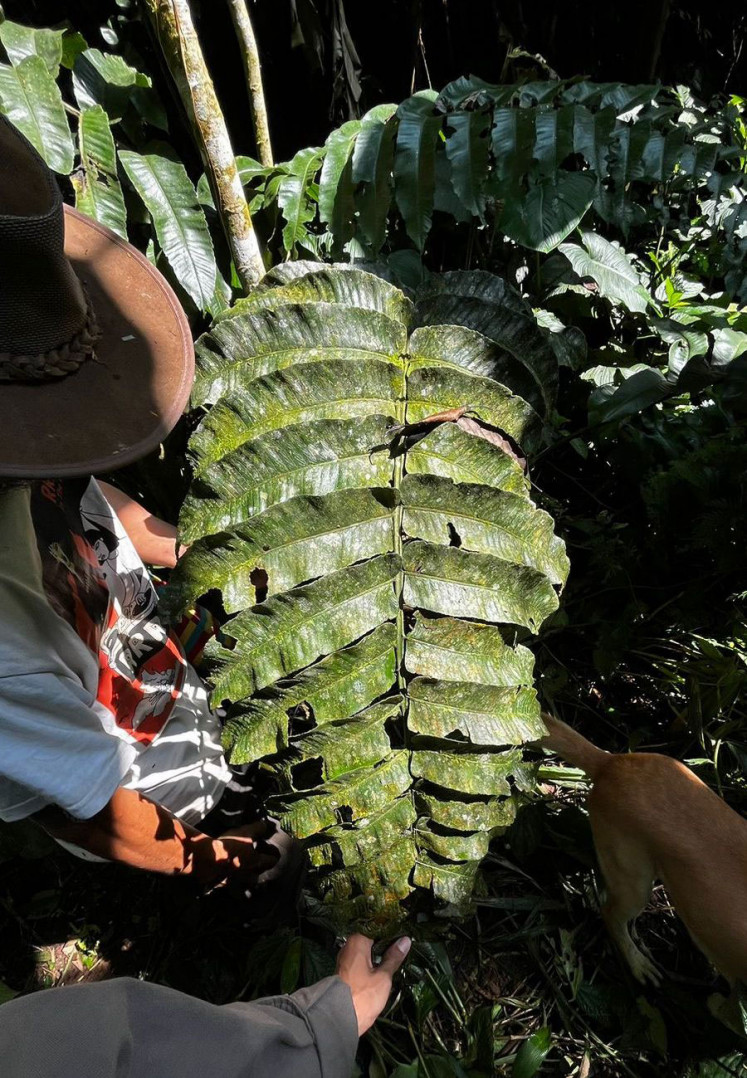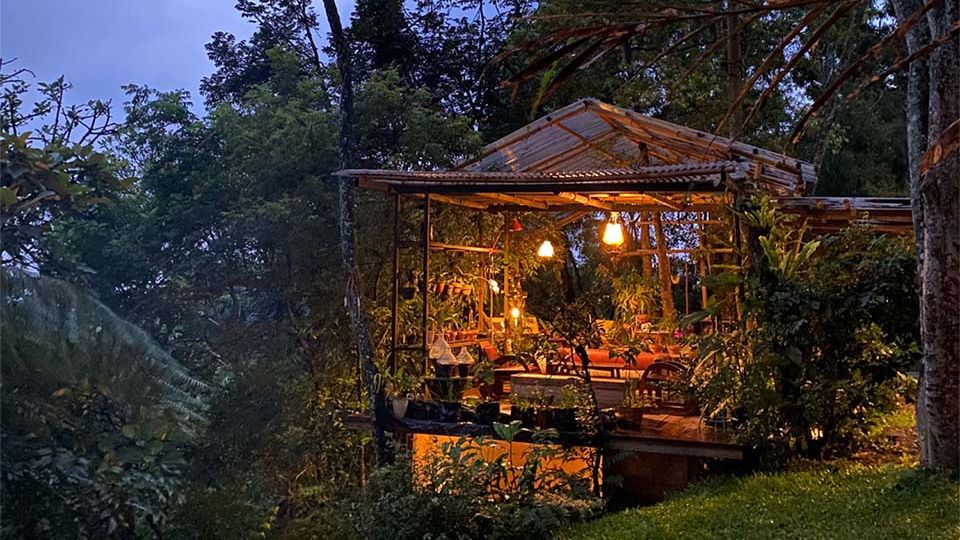June 20, 2024
JAKARTA – Plucking a leaf from the sea of green to his right, Isep Kurnia ripped it in two and passed it to us. “This is edible too,” he said, “it tastes similar to kacang panjang [long bean].”
In what felt like deep in the forest of Gede Pangrango in West Java, Isep, the founder of Bumi Bagja Food Forest, was taking us on a walk to find edible plants – and it turned out most of the forest was more than suitable for a fragrant salad.
Isep and his wife Ari Hasniar run Bumi Bagja, a project they started in 2006 that has since expanded into a homestay, smokehouse and restaurant. The couple run residencies and courses for those who want to get to know the forest and its many uses.
Isep takes his guests on foraging trips, through sun-speckled bamboo tunnels and stopping at secret waterfalls along the way, with the gathered leaves and mushrooms going into the dinner.
Just up the road from Bumi Bagja is the entrance to the Situ Gunung National Park and its famous suspension bridge, which at the weekends is packed with those escaping the hustle of Jakarta. But here in the forest it was calm, save for the odd butterfly or Javan lutung.
For this Weekly 5, we asked Isep for five edible plants that can be easily found in green areas around the forest (and around Indonesia).
‘Pohpohan’

A Pohpohan plant grows on the slopes of Mount Pangrango. Pohpohan is cultivated and grows wildly around Bumi Bagja. PHOTO: ISEP KURNIA/THE JAKARTA POST
A Sundanese staple, pohpohan (Pilea melastomoides) leaves are delightfully light and lemony.
Used primarily in lalapan (Sundanese fresh salad) in West Java, these leaves slightly resemble the perilla leaves used in Japanese and Korean cooking, and can be used in a similar way – eaten fresh and plain to accompany fried chicken, tempeh and sambal. Luckily, these leaves are quite easily found in most high areas, not only in the center of the forest.
Isep tears pohpohan leaves and tops them with crushed tomato and a light, homemade vinegar for a simple yet refreshing salad.
‘Walang’

A walang (culantro) rosette is seen in the garden of Bumi Bagja Food Forest. PHOTO: THE JAKARTA POST
If you happen to eat at Bumi Bagja, you will find yourself marveling at the tangy sambal offered to go with the main courses. The secret ingredient? Shredded walang (Eryngium foetidum) leaves, commonly known as culantro, or sawtooth coriander.
The nickname culantro comes from its similarity in flavor to cilantro, although about six times more powerful, even though walang actually comes from the same species family as carrots. With long, slightly spiky stems that grow in a rosette, the leaf can also be found across damp, forested areas of Java, as well as around Southeast Asia, the Caribbean and South America.
Isep explained that walang works well either fresh or cooked, where, unlike cilantro, it retains its distinctive citrusy flavor.
‘Wild mint’

A sprig of wild mint is held near Bumi Bagja Food Forest. PHOTO: THE JAKARTA POST
Across the hills and forest surrounding Bumi Bagja is the nearby village of Cikaramat, where villagers work the nearby paddy fields and produce deliciously smoky palm sugar. Here, we were surprised to be introduced to bushes of wild mint growing near a spring that gives the village its name, “sacred water”.
This mint, Latin name Mentha canadensis, primarily grows in North America but can also be found here in Java and across eastern parts of Asia. It tastes primarily like peppermint and has a more waxy texture than the mint you normally buy in the supermarket.
We brought some back with us for the evening’s salad and to add to our drinks.
‘Reundeu’

Isep holds up a reundeu leaf found by a river. The leaf tastes like long bean. PHOTO: THE JAKARTA POST
Another plant to occasionally make an appearance in lalapan, reundeu (Staurogyne elongata) tastes like a mix of long bean and cilantro. Isep explained that it also has a number of medical properties, such as treating kidney stones and joint problems.
Reundeu, native to Java and Sumatra, is often found along the river bank. Though the flavor is less intense than most of the leaves we nibbled on as we walked, there was something moreish about reundeu, and its light, fresh flavor would complement a range of salads and sides.
‘Paku suuk’

Isep and Ari hold up the fronds of paku suuk (nut fern) in the forests around Bumi Bagja. PHOTO: ARI HASNIAR/THE JAKARTA POST
There are many regional dishes in Indonesia that use fern fronds, from Padang dishes where they are cooked in a creamy coconut sauce to Sundanese dishes where fronds are sauteed. On this particular ramble through the forests of Gede Pangrono, we came across the paku suuk (nut fern in Sundanese) – Isep and Ari have yet to find the Indonesian or latin name.
A large fern species, the tightly furled fronds – which I have recently discovered are called fiddleheads in English – grow firmly to the stem and need to be removed with a knife. As the name suggests, they have the texture of a nut rather than curled leaves.
Isep stir fries the paku suuk with soy sauce, garlic and chili, with the result being a unique crunchy, sweet yet earthy dish.
This article is part of The Weekender, which comes out on the Saturday edition of The Jakarta Post. It offers a variety of lifestyle and culture articles aimed at enriching your reading experience. Subscribe here to get access to the Saturday edition and all other premium content from the Post.


